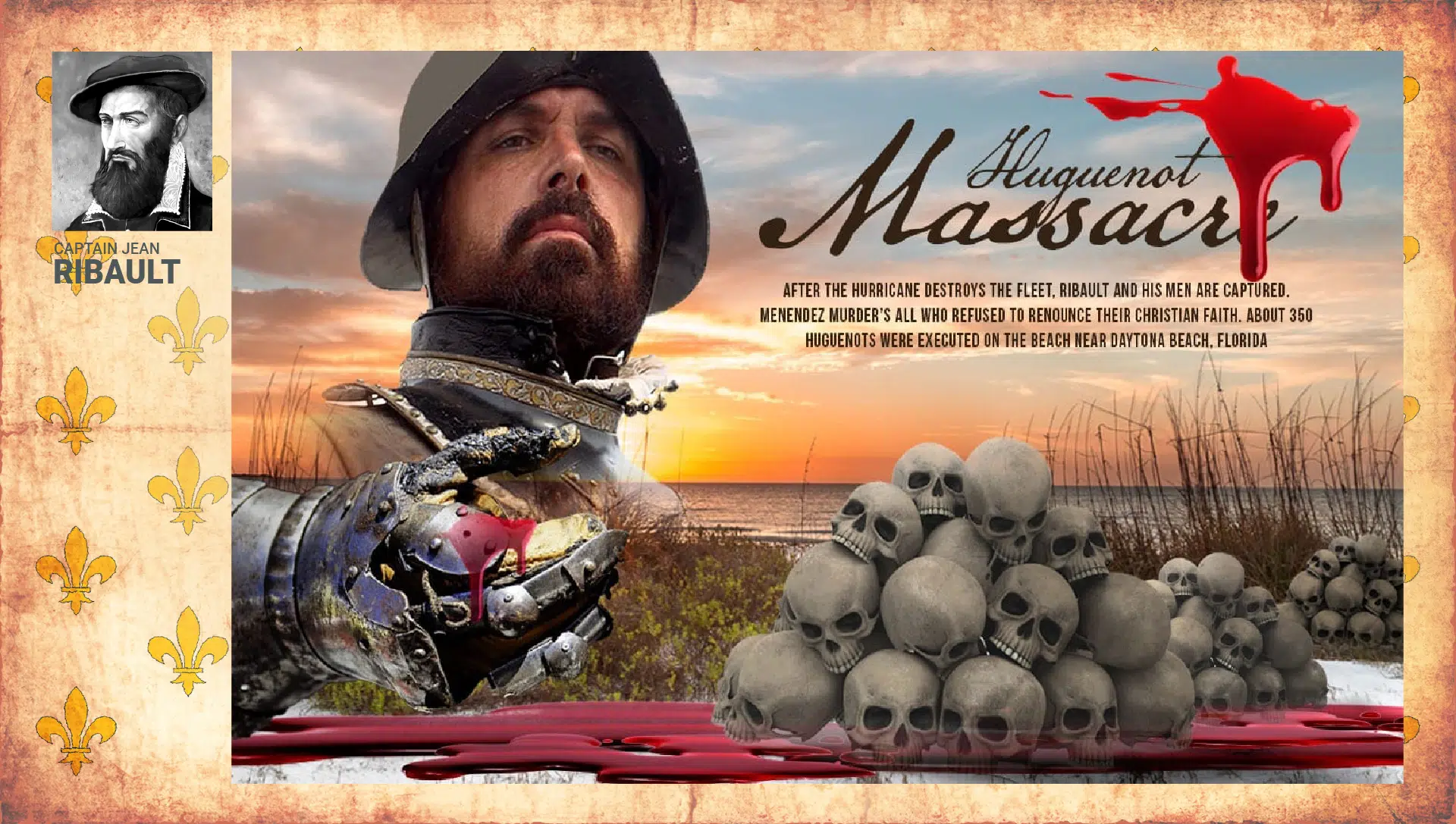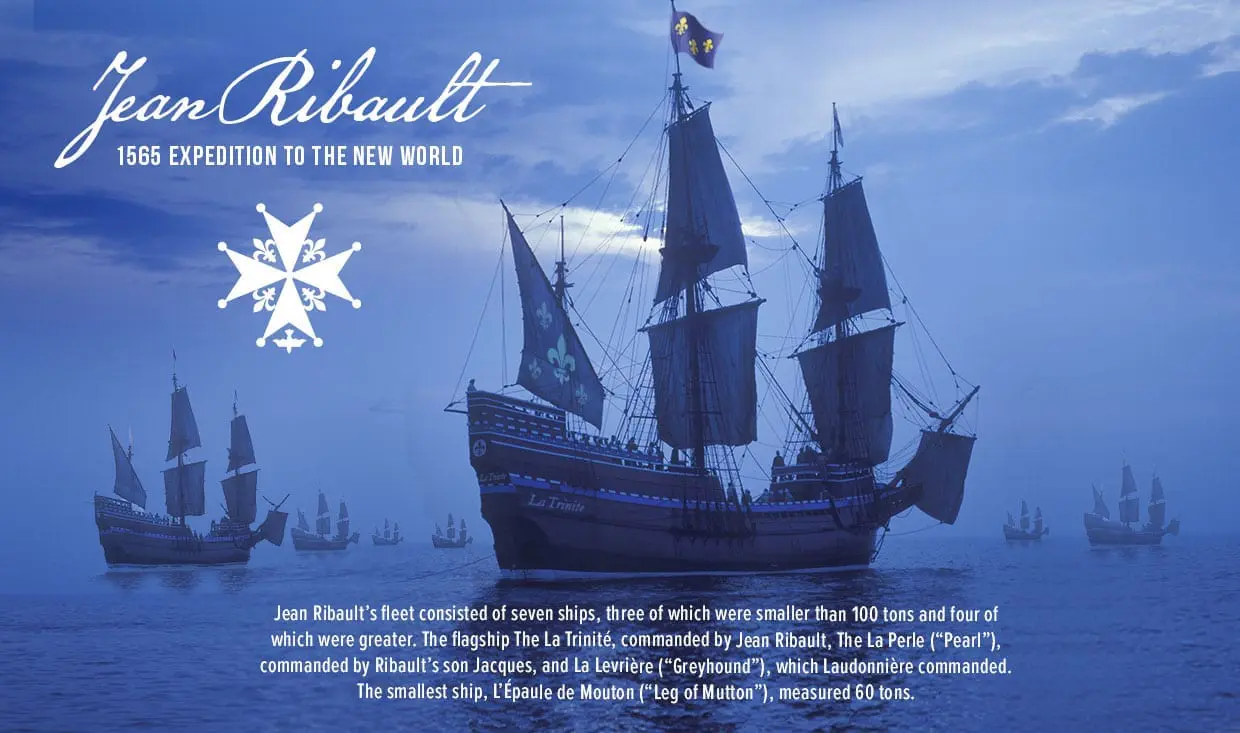The early history of Florida, was a time of turmoil, as the race to establish colonies in the New World began to take place. Coinciding with the religious wars of the Catholic Church that were taking place in Europe, the scene was set for religious conflict and bloodshed. However, it was far from the shores of Europe, in the unlikely destination of St. Augustine, Florida, that one of the most brutal massacres of the time took place. In fact, Fort Matanzas, just south of St. Augustine, earned its name from the killings that took place here, as ‘Mantanzas’, translates to ‘Slaughter’ in Spanish.
To truly understand the history surrounding the massacre of the Huguenot by the Spanish in Florida, it’s important to have a little bit of backstory to what was happening in Europe at the time. In April 1517, Martin Luther, a young lecturer of biblical studies, witnessed a representative of the Pope selling absolutions from sin to the locals in a small German market town. Outraged by what he saw, Luther drafted a list of ninety-five reasons that this practice went against the doctrine of the Catholic Church. He sent a letter to his archbishop outlining his views and soon other protestors, or Protestants, began supporting Martin Luther and his views. What followed was the Protestant Reformation, a period of decades of religious conflict.
French Huguenots Settle In Fort Caroline
In the 1560s the French Protestants, also known as Huguenots, were seeking out a location in the New World to establish a protestant state. From this protestant state, they would be free to practice their religion without persecution from any outside parties. Sending an expedition to, what is now the St. John’s River area of Florida, they successfully set up a colony called Fort Caroline, in an area near modern-day St. Augustine. Frenchman Rene de Laudonniere began the colony on land that belonged to the Spanish crown. Needless to say, the Spanish monarch was outraged by the news, especially as the settlers were French Huguenots and not devout Catholics like the Spanish King and his subjects.
Preparing For Battle
King Philip II immediately dispatched a fleet of eleven ships, carrying 1,000 soldiers and settlers. General Pedro Menendez de Aviles was one of the Spanish crowns most brutal commanders and was charged with removing the French Huguenots and setting up a Spanish colony in their place.
At the same time, Jean Ribault sailed from France on September 10th, 1565 with a further 600 troops and settlers, to resupply Fort Caroline and drive the Spanish in Florida out. Despite the King’s protests with Jean Ribault’s decision to set sail, he took it upon himself to cross the Atlantic to assist his fellow French Huguenots people who had started their new life in Fort Caroline.
Mendez Captures Fort Carolina
Unfortunately, for Jean Ribault and his crew, a hurricane pushed his ships too far south, leaving them shipwrecked on the Florida Coast, between, what is now, Cape Canaveral and Daytona Beach.
With only five ships left from their fleet of eleven, the Spanish fleet made landfall on September 8th, 1565. They named their new village St. Augustine as the land had been sighted on August 28th, the Feast Day of St Augustine.
Menendez and his men led an attack on Fort Caroline, where they were able to capture the French Huguenot settlement with relative ease. The Spanish soldiers killed most of the men during the battle, sparing the women and children who were sent to Havana by ship. Some of the French inhabitants, including colony founder Rene de Laudonniere and artist, Jacques LeMoyne, managed to escape to ships and return to France. However, Mendez quickly received news of a group of 127 more Frenchmen who were on the other side of an inlet, just south of Fort Caroline.

The Massacre Of The Huguenot By The Spanish In Florida
With the help of a captured Frenchman, who played the role of translator, Menendez informed the surviving Huguenot inhabitants that Fort Caroline had been captured and they needed to surrender. With all of their weapons, food, and supplies onboard the ships they were trying to prepare to sail back to France, the French had no choice but to surrender.
Chaplain Francisco Mendoza asked Menendez to spare any Catholic French. In the end, the majority refused, resulting in the brutal killing of 111 Frenchmen. Just sixteen men were spared including four artisans whose skills were required, some who professed to be Catholic, and a handful of impressed Breton sailors.
Just two weeks later, the same thing happened again as more French survivors appeared at the inlet, including Jean Ribault and his men. On October 12th Ribault and his crew surrendered but refused to give up their Protestant faith and convert to Catholics. In this Huguenot disaster, 134 were savagely killed by the Spanish.
Because of these events, the inlet was known as ‘Mantanzas’, which means ‘slaughters’ in Spanish.
Explore More Of The Fascinating History Of Florida
All that remains at the site of the massacre of the Huguenots by the Spanish in Florida is a small wooden sign commemorating what happened at this spot. A 298-acre park houses a small museum that you can visit and tourists can visit Fort Mantanzas to learn more about this unique place that marks the beginning of European settlement in the New World.




